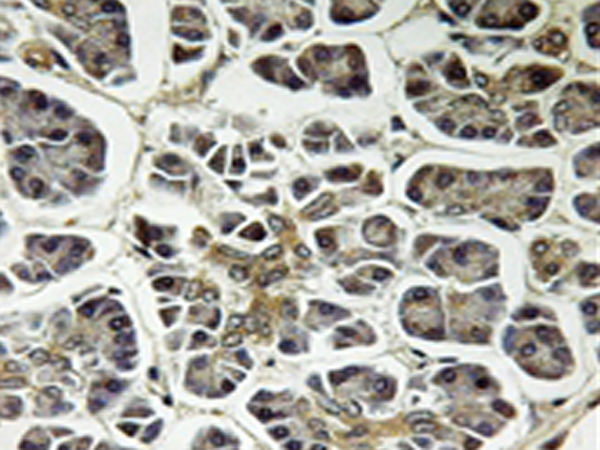中文名称:兔抗ATP5G2多克隆抗体
|
Background: |
This gene encodes a subunit of mitochondrial ATP synthase. Mitochondrial ATP synthase catalyzes ATP synthesis, utilizing an electrochemical gradient of protons across the inner membrane during oxidative phosphorylation. ATP synthase is composed of two linked multi-subunit complexes: the soluble catalytic core, F1, and the membrane-spanning component, Fo, comprising the proton channel. The catalytic portion of mitochondrial ATP synthase consists of 5 different subunits (alpha, beta, gamma, delta, and epsilon) assembled with a stoichiometry of 3 alpha, 3 beta, and single representatives of the gamma, delta, and epsilon subunits. The proton channel likely has nine subunits (a, b, c, d, e, f, g, F6 and 8). There are three separate genes which encode subunit c of the proton channel and they specify precursors with different import sequences but identical mature proteins. The protein encoded by this gene is one of three precursors of subunit c. Alternatively spliced transcript variants encoding different isoforms have been identified. This gene has multiple pseudogenes. |
|
Applications: |
IHC |
|
Name of antibody: |
ATP5G2 |
|
Immunogen: |
Synthesized peptide derived from internal of human ATP5G2. |
|
Full name: |
ATP synthase, H+ transporting, mitochondrial Fo complex, subunit C2 (subunit 9) |
|
Synonyms: |
ATP5A |
|
SwissProt: |
Q06055 |
|
IHC positive control: |
Human pancreas tissue |
|
IHC Recommend dilution: |
50-100 |

 购物车
购物车 帮助
帮助
 021-54845833/15800441009
021-54845833/15800441009
